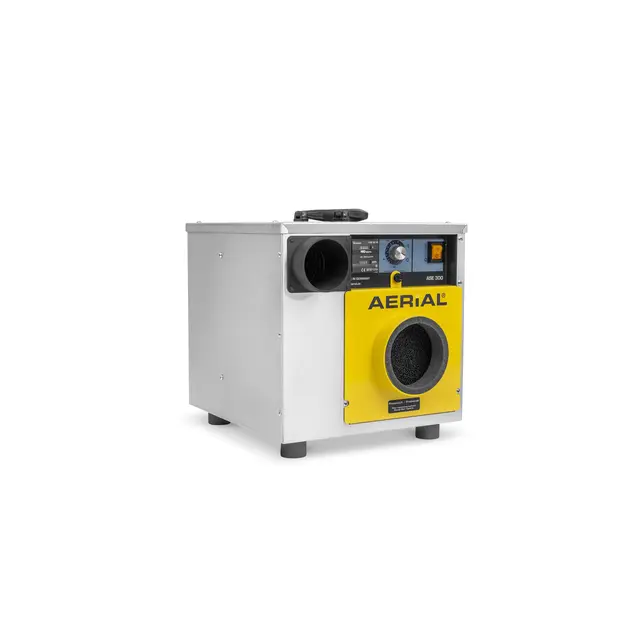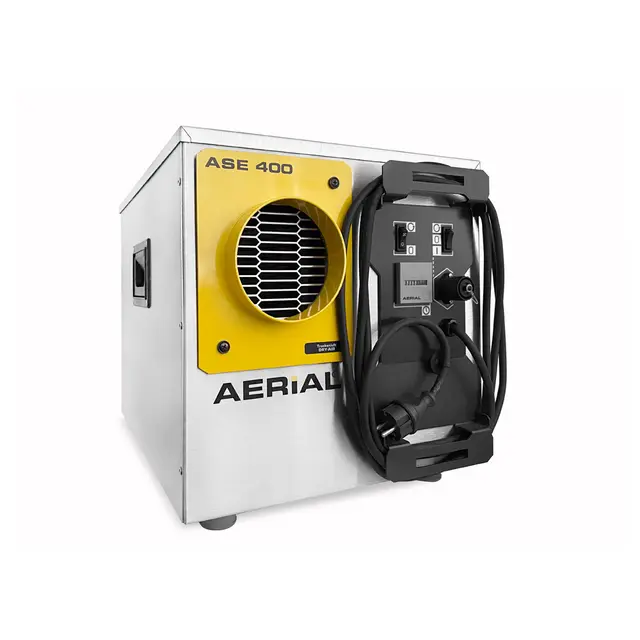Sortedam Dossering: Tackling mould problems in a historic property

- Home
- Insights
- Humidity control and drying insights
- Sortedam Dossering: Tackling mould problems in a historic property
It is no secret that standing water and buildings do not mix. From moisture trapped in wall cavities, to contaminated black water in basements and cellars, excessive water levels can cause substantial amounts of costly damage and disruption for residents and property owners.
This is especially true for historic buildings. Built with more primitive methods and materials, centuries-old structures, like those found along the shore of Sortedam Lake in Copenhagen, are even more susceptible to water ingress.
In this article, we outline the structural and mould problems a shore-side 19th-century apartment complex faced due to groundwater, and how Dantherm Group devised the ideal solution – one able to protect the building and its unique heritage without expensive or invasive work.
A humidity control nightmare on the shores of Sortedam Lake
Despite offering residents stunning vistas, Sortedam Dossering, a street bordering the western shore of the lake, was proving to be a challenging environment for our client and their historic apartment building.
Due to its close proximity to the lake, the land the property was built upon was saturated with groundwater. Over time, this moisture gradually penetrated the building’s basement and caused a number of significant humidity problems.
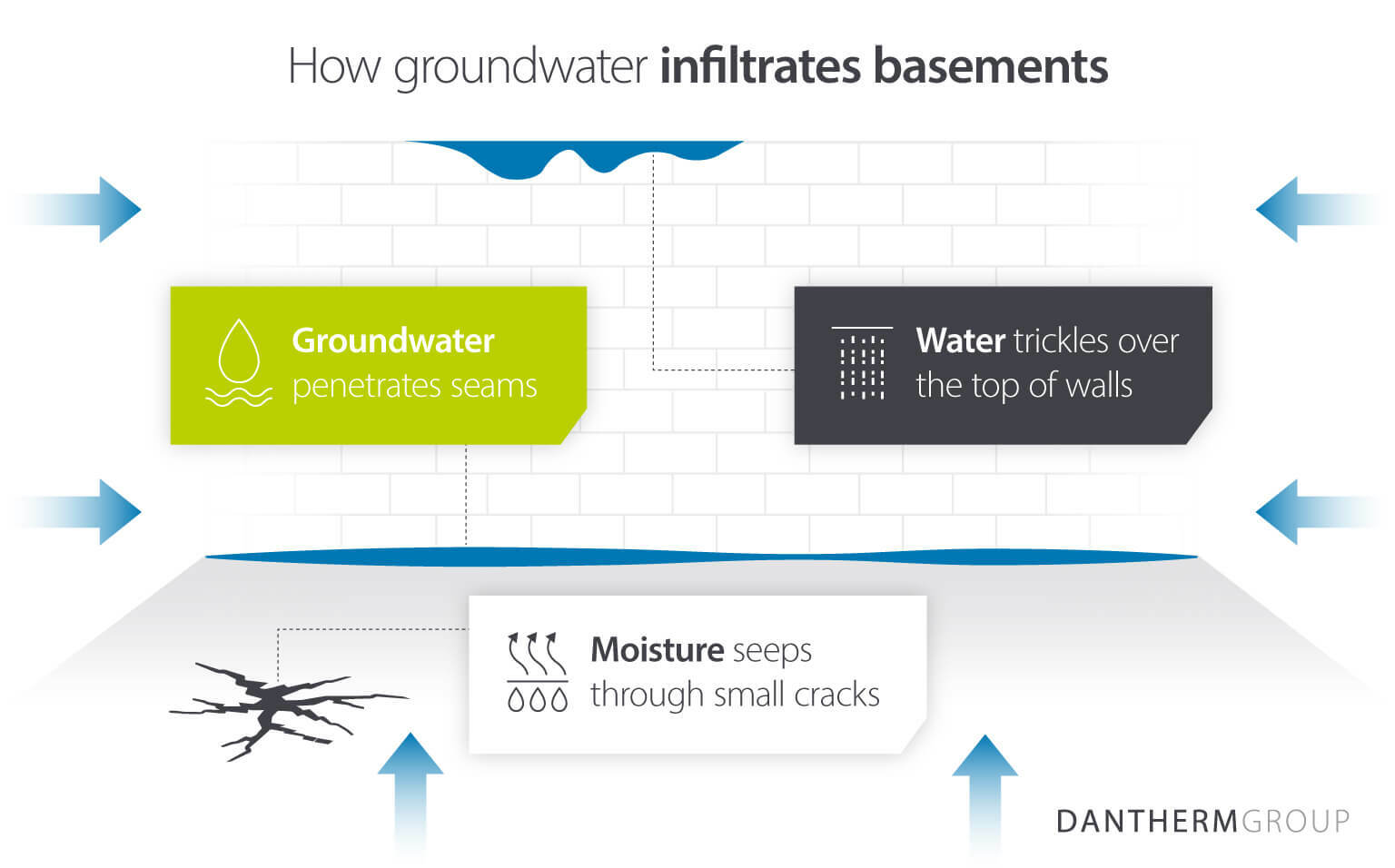
What problems did damp cause in the basement?
The most visible issue caused by the rising humidity levels, which often exceeded 90% relative humidity (RH) was widespread mould and mildew. As water found its way into the basement, it settled on plasterboard, wood and brick, allowing growth to take hold without resistance.
This did more than send hygiene levels plummeting. The mould problems also caused the buildup of musty smells and unpleasant odours, and, more seriously, this presented numerous health risks:
Mould spores that irritate the eyes, nose, throat and skin
Airborne particles that trigger the development of respiratory infections
Poor indoor air quality that also trigger people’s asthma and allergies
In addition to this, moisture ingress was causing water damage to the structure of the building itself. Without a preventative drying solution, this could have irreparably weakened the structural integrity of the property and eventually left it uninhabitable for its residents.
Due to this structural damage, regular repairs were required to replace tarnished materials and tackle the ongoing mould problem. Without a tailored climate control solution for their building, this expense would only rise with each passing year.
Why is water damage so difficult to resolve in historic properties?
Water damage is one of the most destructive and difficult types of damage to treat, particularly in historic structures.
This is because water can discreetly seep into the small cracks and crevices often found in old buildings. Even small leaks that go unnoticed can cause extensive damage over time, allowing rot and decay to occur out of sight.
It is not just the way heritage properties are built that adds to the severity of moisture infiltration. Taking steps to dry these spaces also presents a unique set of complications when compared to restoring water damage in modern buildings:
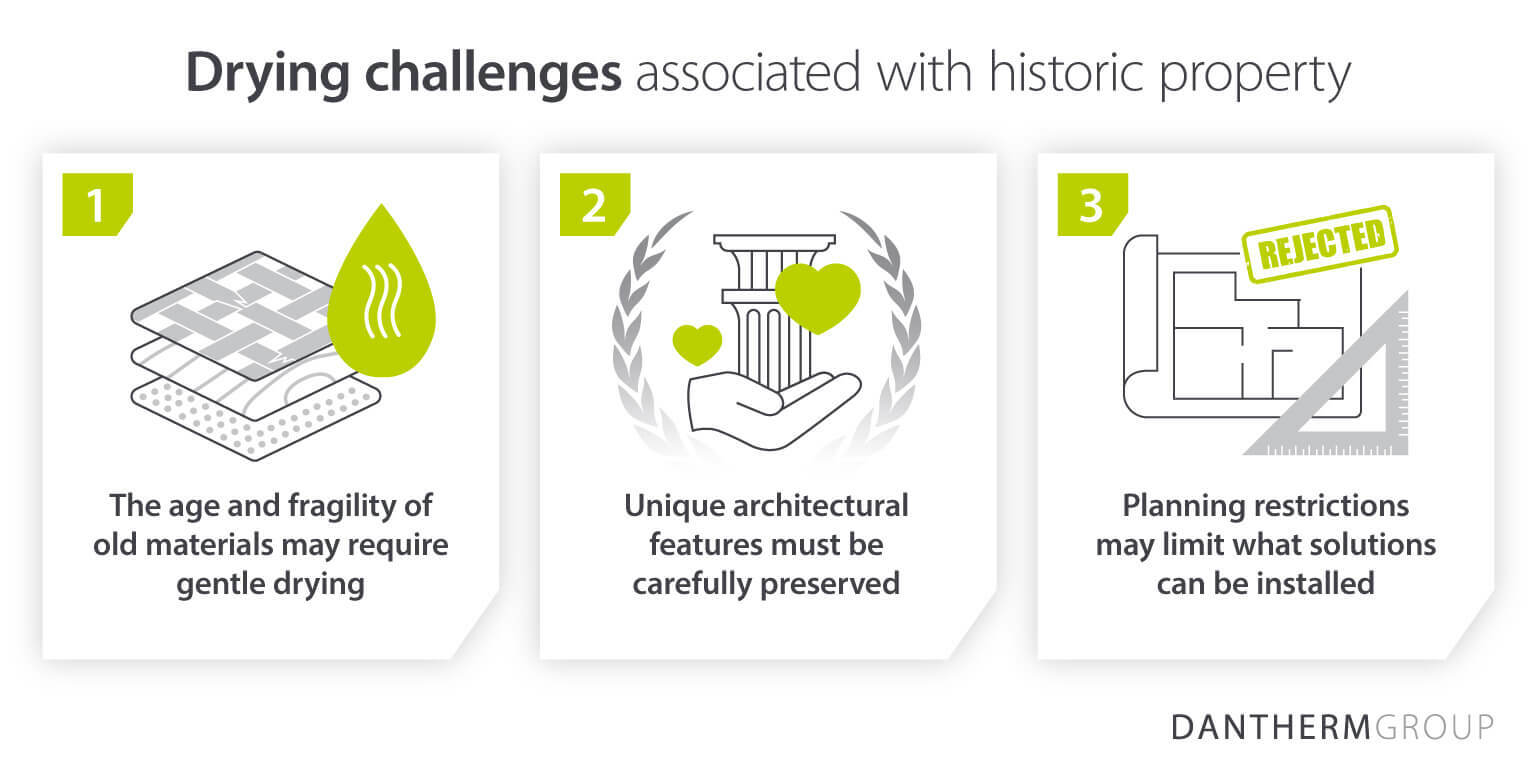
Furthermore, porous materials, such as masonry and timber, are commonly found in old structures. When these materials become damp, mould is able to thrive in these properties, adding to the difficulty of water damage restoration.
Plus, even after finding the source of the water damage, removing all traces of it inside a historic property is challenging. To stop mould growing, it is not just enough to simply address the visible signs of decay – moisture can linger in the walls and other hidden spaces to cause ongoing problems.
How did Dantherm Group get involved?
Addressing building humidity and mould properly is a specialist task that requires the right expertise and equipment. That is why Dantherm Group was approached by the advisor of the apartment complex.
In the past, this historic building had air vents installed to help control temperature and humidity in its basement. However, these did not have the intended effect, and moisture continued to cause damage.
Seeking a permanent solution that ridded the space of mould problems and established a healthy indoor atmosphere throughout the entire 600m² basement, we worked closely with the client to supply humidity control equipment that would successfully maintain 55% RH year-round.
What solution did we choose?
After getting to understand the problems the property was facing, as well as the limitations of the project, we determined that the AD 300 was the optimal dehumidifier for the task. Alongside this, Simplify Climate Solutions, our remote monitoring system, was also installed during the initial stages.
This adsorption dehumidifier was selected as it could remove excess moisture without the need for a drain. This was crucial, as retroactively fitting drainage in the basement was not an option for this 130+ year old building.
Instead, the unit draws humid air into the system, capturing excess moisture within desiccant materials. Warm air is then blown over these materials, forcing damp air into ducts and out of the space through existing air vents.
Too much dry air would send energy bills and repair costs soaring, whereas too little would have minimal impact. As a result, five AD 300 adsorption dehumidifiers were fitted to deliver the necessary air flow to maintain the optimal climate in this substantial space.
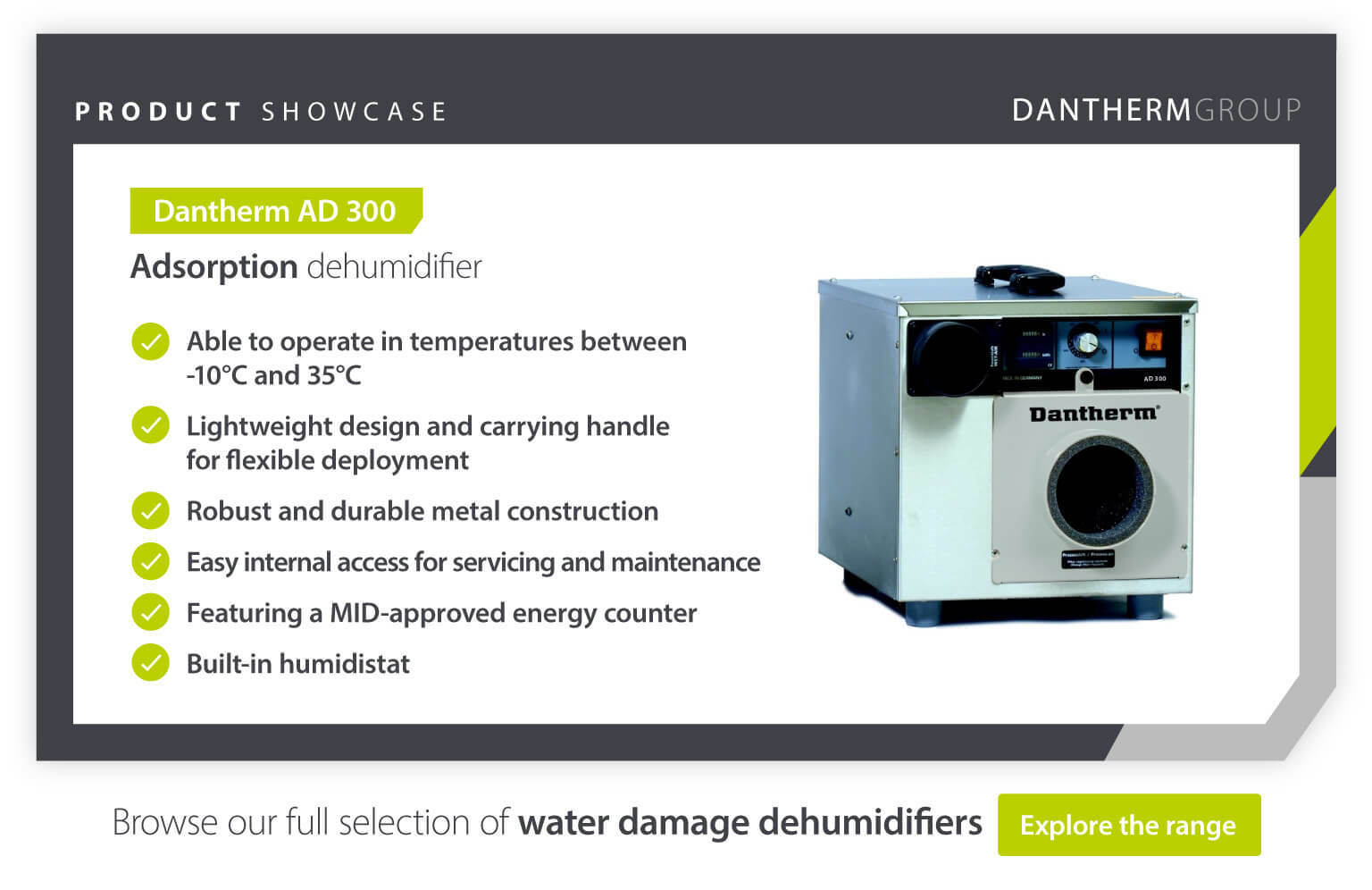
Furthermore, to ensure suitable progress was being made throughout the entire space, we deployed a Simplify remote monitoring system alongside the five drying units.
With one base unit and ten sensors to collect data, Dantherm Group technicians could keep an eye on drying progress without the need for on-site visits. With hour-by-hour performance charted on a graph – all accessible online – the effectiveness of the solution was documented and shared with the client to demonstrate our units’ effectiveness.
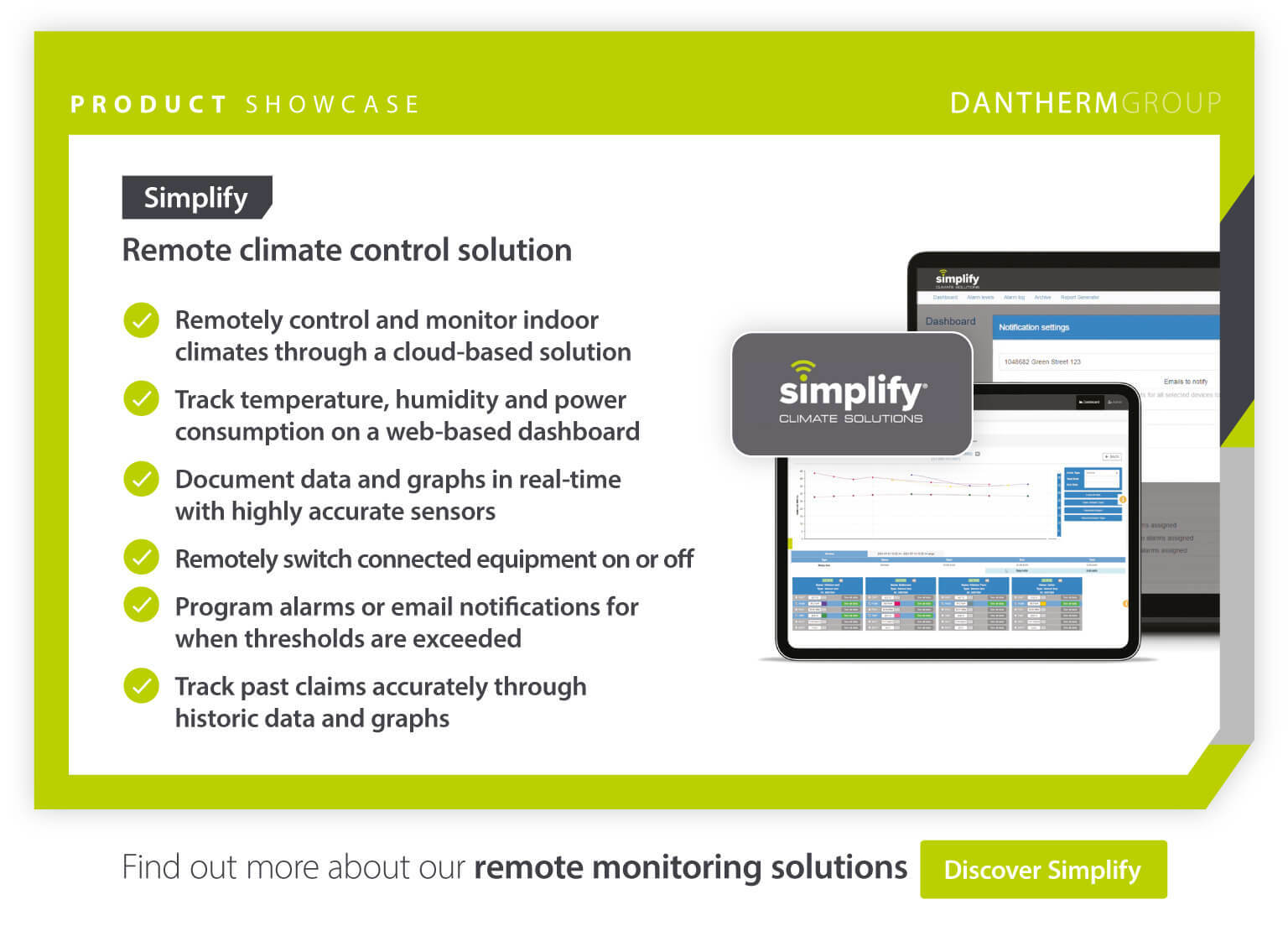
For a closer look at the benefits of remote monitoring during water damage restoration, check out our article.
Preserving the health of the building and its residents
Through the use of the right humidity control equipment and our versatile remote monitoring system, we provided a solution that met the needs of the client and the building at a reasonable cost.
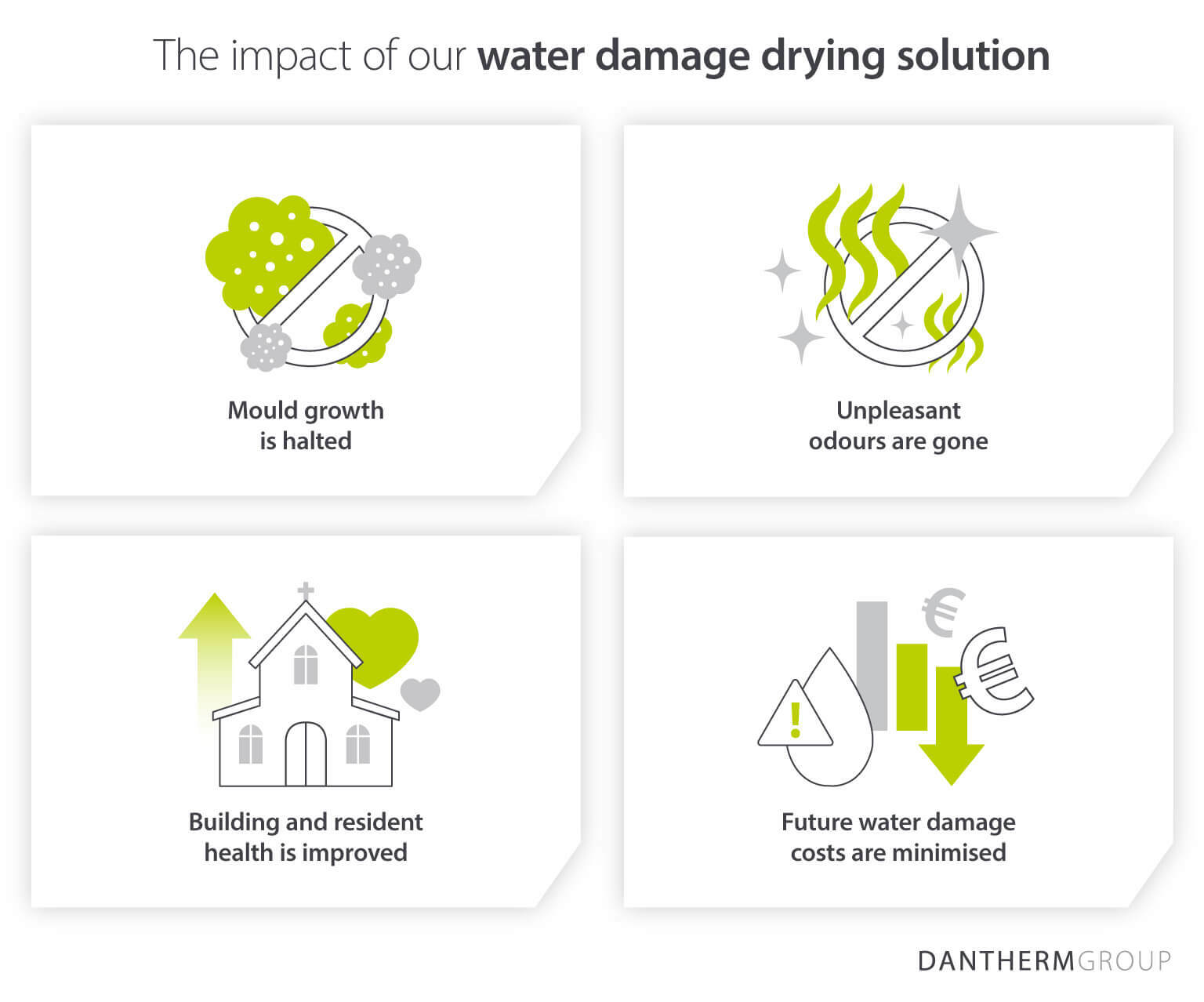
Thanks to our Simplify remote monitoring solution, we have been able to monitor the ongoing performance of our drying solution. During the project’s initial stages, we saw humidity levels inside fall from highs of 90% RH, down to a comfortable and healthy 45% RH.
As the groundwater cannot be removed, our solution is designed to run constantly, and help preserve this historic building for years to come – keeping water, mould and odours under control.
Why Dantherm is the go-to name for water damage drying
Although our experts took great pride in delivering the right solution for this historic property in Copenhagen, this is only the beginning of our journey.
Through our vast network of servicing, spare parts and advice, we are poised to support our client with their solution well into the future. From queries about the optimal setup, to fast-acting support in the event of a breakdown, our support provides total peace of mind.
Through more than 60 years of experience, and our wide range of efficient, sustainable, reliable and easy-to-use humidity control equipment, we have delivered meaningful drying performance all over the world – from flooded properties to historic churches.
Learn how we can help you sustainably manage your humidity levels and protect your property from water damage. Get in touch with our team using the form below.
*Please note that the AD 300 is now called ASE 300. It is the exact same product.
Related products
Featured insights

The top water damage considerations for older buildings and sensitive materials.
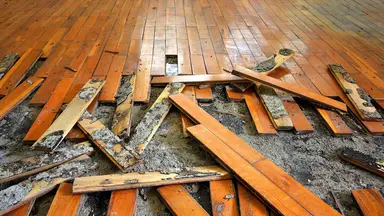
Top tips for drying out buildings
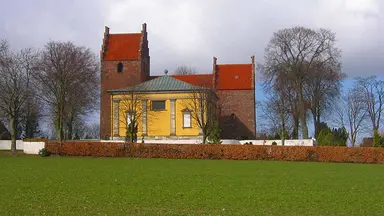
Protecting historic build structures through drying technology.
Need help with choosing the right solution? Our team of over 100 climate control experts can assist.
You can also reach out or join the discussion on our Social Media. Check out our LinkedIn page.
